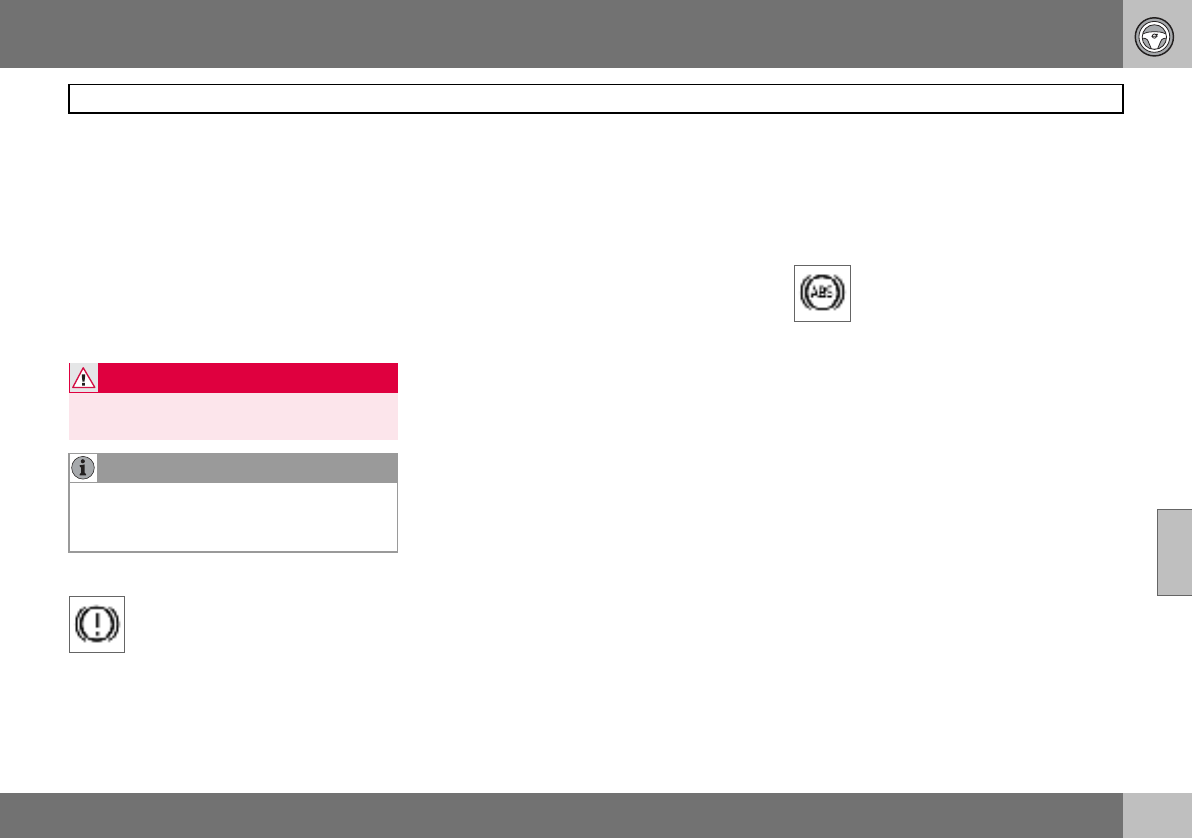
06 Starting and driving
119
Brake system
06
Brake servo
If the car is rolling or is being towed with the
engine turned off, the brake pedal must be
pressed about five times harder than when
the engine is running. If the brake pedal is
depressed when the engine is started, you
will feel the pedal drop. This is normal and
due to the brake servo becoming active. This
may be more noticeable if the car has Emer-
gency Brake Assistance (EBA).
Brake circuits
This symbol lights if a brake circuit
is not working.
If a fault should occur in one of the
circuits, it is still possible to brake
the car. The brake pedal will travel further
and may feel softer than normal. Harder
pressure on the pedal is needed to produce
the normal braking effect.
Dampness can affect braking charac-
teristics
Brake components become wet when the
car is driven in heavy rain, through pools of
water or when the car is washed. This may
alter brake pad friction characteristics so that
there is a delay before braking effect is no-
ticed.
Press the brake pedal lightly from time to
time if driving for long stretches in rain or
slushy snow, as well as after setting off in
very damp or cold weather. This warms up
the brake pads and dries off any water. This
precaution is also recommended before
parking the car for a long period in such
weather conditions.
If the brakes are used heavily
When driving in the Alps or other roads with
similar characteristics, the car’s brakes are
heavily loaded even if the brake pedal is not
being depressed especially hard.
Because speed is often low, the brakes are
not cooled as effectively as when driving on
flat roads at higher speed.
So as not to overload the brakes, shift down
when driving downhill instead of using the
foot brake. Use the same gear driving down-
hill as you would use driving uphill. This uses
engine braking more efficiently so the foot
brake is only required for brief periods.
Bear in mind that driving with a trailer puts an
additional load on the car’s brakes.
Anti-lock braking system (ABS)
The anti-lock braking system (ABS)
prevents the wheels from locking
up during braking.
This means the ability to steer is
maintained and it is easier to swerve to avoid
a hazard for example.
After the engine has been started, the ABS
will perform a brief self-test at a speed of
about 20 km/h. This can be felt and heard as
pulses in the brake pedal.
To get the most out of the ABS:
1. Depress the brake pedal with full force.
Pulses will be felt.
2. Steer the car in the direction of travel.
Do not release the pressure on the
pedal.
Practice braking with the ABS system in a
traffic-free area and in different weather con-
ditions.
The ABS symbol illuminates for two seconds
if there was a fault in the ABS system when
the engine was last running.
WARNING
The brake servo only works when the en-
gine is running.
NOTE
If braking with the engine switched off,
press the brake pedal sharply once, not re-
peatedly.


















